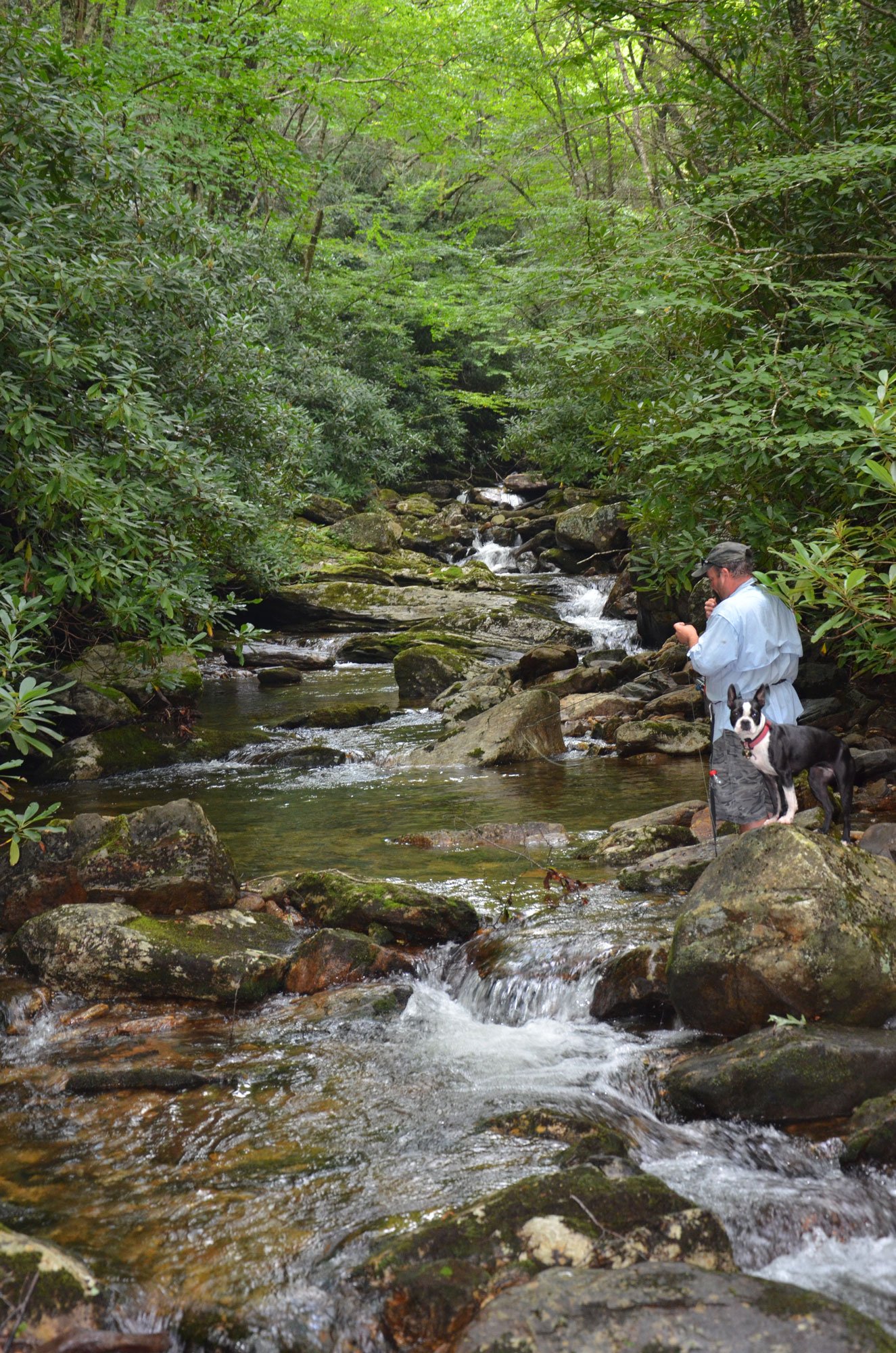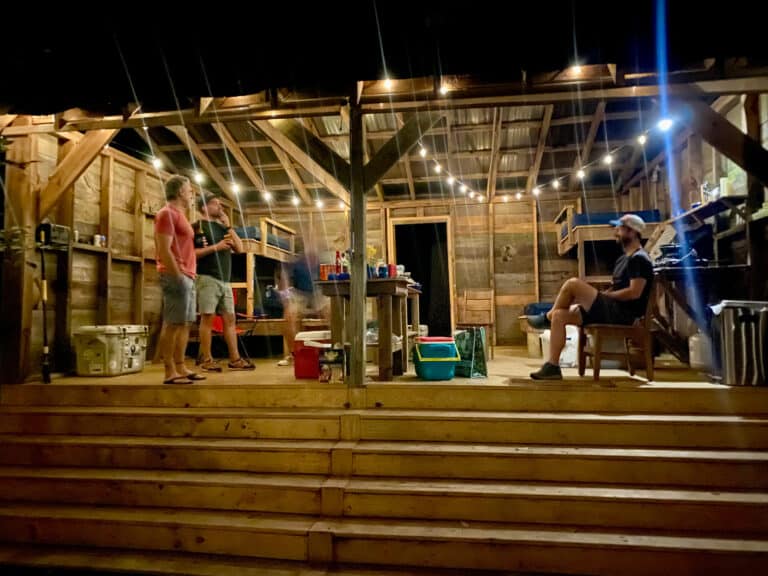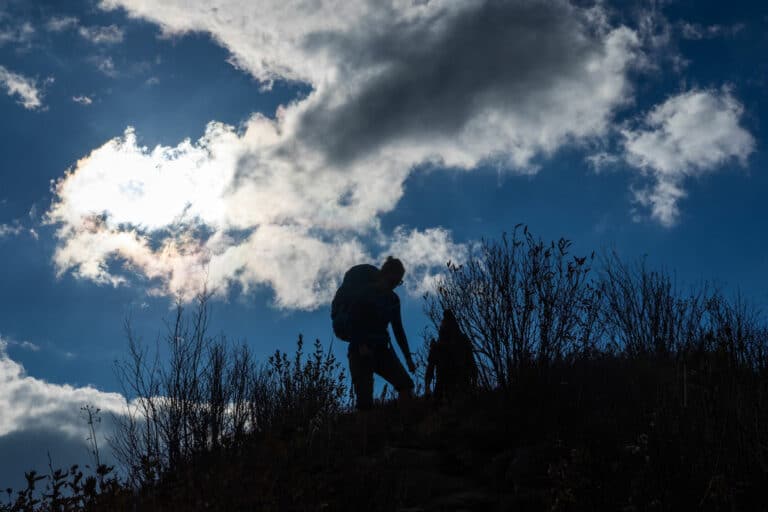Cover photo by Nick Carter
Stream-Born Trout Fisheries in the Blue Ridge
Catching stocked trout is fun, but there’s no denying the added allure of casting for stream-born fish. They’re prettier than hatchery-raised trout, they fight harder, and they’re fully in tune with the fisheries where they live out their life cycles.
To some, it might come as a surprise that the only native species of salmonid in the Blue Ridge is the gorgeous species of char we call brook trout. Brown trout were imported from Europe beginning in the late 1800s to give people something to fish for. Rainbow trout, native to the western slope of the Rocky Mountains, were introduced to our waters a little later for the same reason.
Competition with introduced rainbows and browns is partly responsible for the limited cold-water habitat remaining for our true-native brookies…but it is what it is. Over decades, the non-natives have taken hold and are thriving. All three species are endearing to anglers for different reasons, and most of the places they live and spawn are as beautiful and wild as the fish themselves. So grab your rod and explore these five wild trout streams.
Letort Spring Run
Carlisle, Pennsylvania
Pennsylvania has no shortage of trout streams where little wild fish experience light pressure and feed aggressively. Letort Spring Run is not one of them.
The Letort has a long history of humbling anglers, and that’s part of its appeal. It is an important stream to the history of Pennsylvania fly fishing, one of those places where anglers pay homage to and walk in the bootsteps of legends. The fish are there, and they can grow quite large feeding on the abundance of critters that thrive in watercress beds. But there’s a list of reasons why Letort trout are so tough to catch.
“It’s a blessing and a curse,” said Jacob Gilliland, of TCO Fly Shop in nearby Boiling Springs, Penn. “Because there’s a lot of vegetation, there are a lot of cress bugs that support a healthy wild brown trout fishery. And because there’s a lot of vegetation, it’s very hard to get a drift with your flies.”
Achieving a good drift falls in at the middle of a sequence of actions that must be perfect in order to bring the Letort’s wily browns to net. “The whole thing is technical,” Gilliland said.
It’s a small spring creek, averaging 20 feet in width, with clear water. Silt buildup and cress beds make it difficult to wade, and Gilliland said most anglers walk and fish from the bank. This exacerbates already tight casting conditions.
Also, the fish are cagey because of heavy angling pressure from folks who want to test themselves. Long, light leaders are a requirement, and Gilliland said it helps to be creative with presentations and patterns because these fish have seen everything.
In spring, Gilliland said the river sees hatches of small blue winged olives, midges, and a few little black stoneflies. Tricos show up in summer, and terrestrials like grasshoppers are important in summer, especially in the meadow stretches.
Dry flies are easier to fish over the cress beds, but Gilliland said if he had to choose one fly it would be a cress bug imitation. Other good subsurface options are sculpin-imitating streamers like Woolly Buggers and Slumpbusters, both in olive, or other baitfish imitators like a Shenk’s Minnow or a Bugger in white.
If you choose to take on the challenge of the Letort, rest assured you can also retreat to other very good waters in the area. The Letort flows through Carlisle, in southern Pennsylvania’s Cumberland County. Other good nearby options are Big Spring Creek—which is known for big, wild rainbows, browns, and brookies—and Yellow Breeches Creek, which is heavily stocked with rainbows, brookies, and browns.
More Info: TCO Fly Shop Boiling Springs, tcoflyfishing.com
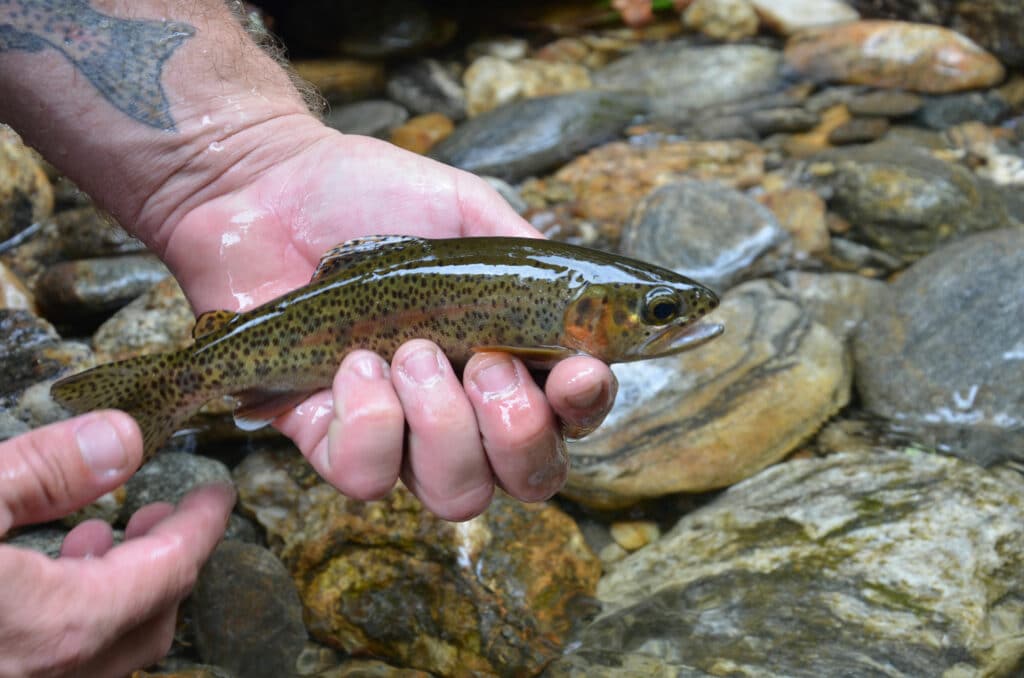
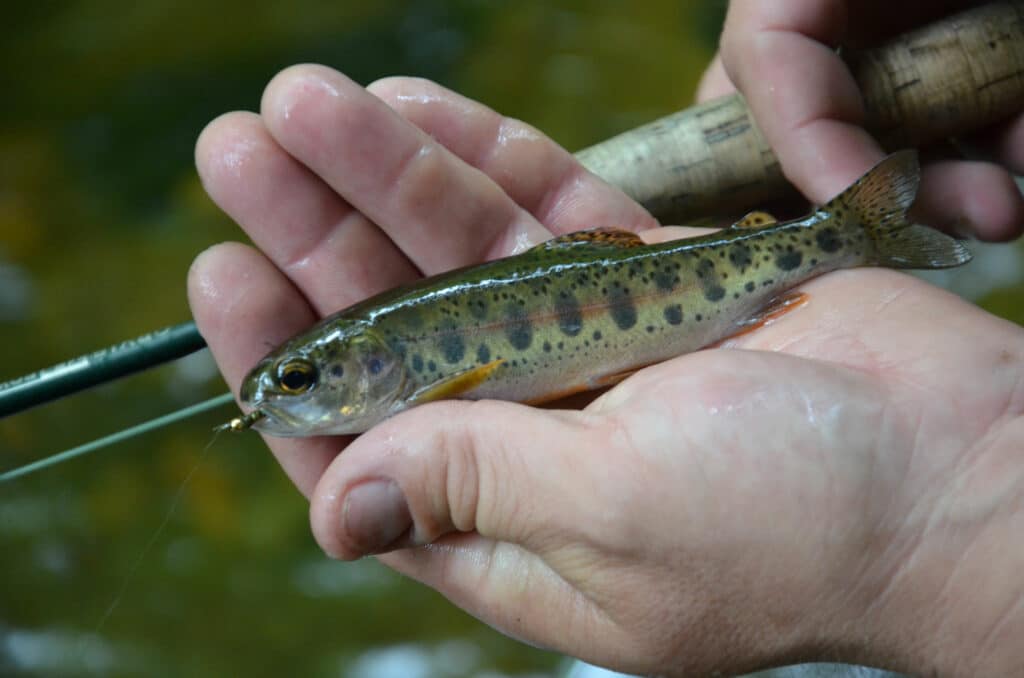
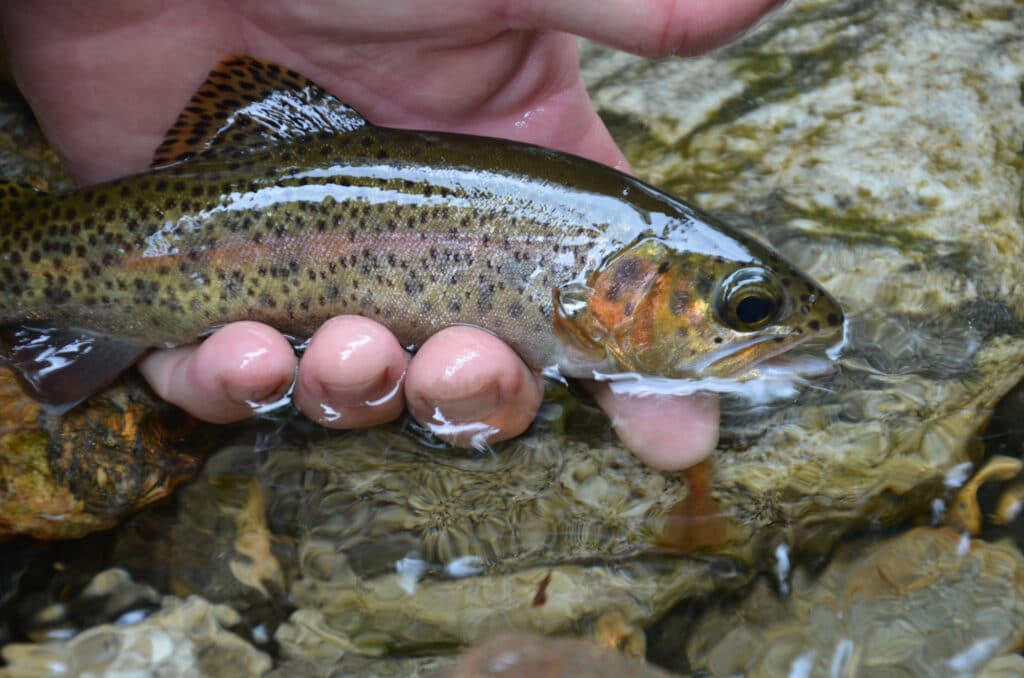
Savage River
Savage River State Forest, Maryland
It might not have been the intended purpose, but one of the region’s best wild trout fisheries was created when they dammed northwest Maryland’s Savage River back in 1952. The tailwater stretch of the Savage in Garrett County hasn’t been stocked since 1991, and it is home to thriving populations of native brook trout and wild brown trout.
There are about five river miles between the Savage River Reservoir Dam and its mouth at the North Branch of the Potomac, and they are some of the best fly fishing miles in the state thanks to special regulations designed to produce trophy trout.
The entire run from the dam to the North Branch is managed under trophy trout regulations. Only artificial lures and flies are allowed, and treble hooks are restricted. It’s open year-round with a two-trout daily creel limit, a 12-inch minimum length on brookies and an 18-inch minimum on browns. There’s also a special fly fishing-only stretch that extends 1.25 miles from the dam to the Allegany Suspension Bridge.
“It’s pretty much catch-and-release, artificial-only,” said James Harris, owner of Beaver Creek Fly Shop. “There are some big ones in there, but I don’t ever see people keeping them.”
Despite being dam controlled, the Savage tailrace looks and fishes like a free-flowing mountain stream. It runs over a steep, cobbled streambed through a deep forested valley. Harris said there’s a lot of holding water featuring deep holes as well as tons of riffles and pocket water spaced between long boulder-strewn flats.
Big brown trout from 18 to 20 inches are a definite possibility on the Savage tailrace, and outsized brookies longer than 14 inches appear occasionally. The norm, however, is a good number of gorgeous stream-bred browns from 12 to 16 inches and native brook trout 12 inches and shorter. Migrant rainbows sometimes show up in the river.
If you’re hunting a trophy brown, sinking line and a big sculpin or other baitfish pattern will sometimes produce, but it might cut down on the action. The river also sees heavy blue-winged olive hatches in the cooler months, and other mayflies like March browns, Light Cahills, and sulphurs will show up through summer, along with brown and yellow stoneflies. The green-sedge, a caddisfly, is an important food source in all its stages on the Savage. Tightlining or indicator nymphing with subsurface patterns for any of these species can be very effective.
Savage River Road parallels the entire stretch. Although there are some pockets of private property, roadside pull-outs and parking areas make it clear where you’re allowed to fish.
More Info: Beaver Creek Fly Shop, beavercreekflyshop.com
Rapidan River
Shenandoah National Park, Virginia
Within the borders of Shenandoah National Park run some of the best native brook trout streams in the country. The venerable Rapidan River just might be the best.
“The Rapidan River is arguably the most iconic native brook trout stream in the Mid-Atlantic,” said Alex McCrickard, Aquatic Education Coordinator for the Virginia Department of Wildlife Resources (DWR). “Anglers from far and wide have traveled to land a wild native brook trout from the same stream that President Herbert Hoover once frequented to escape the political heat of the nation’s capital.”
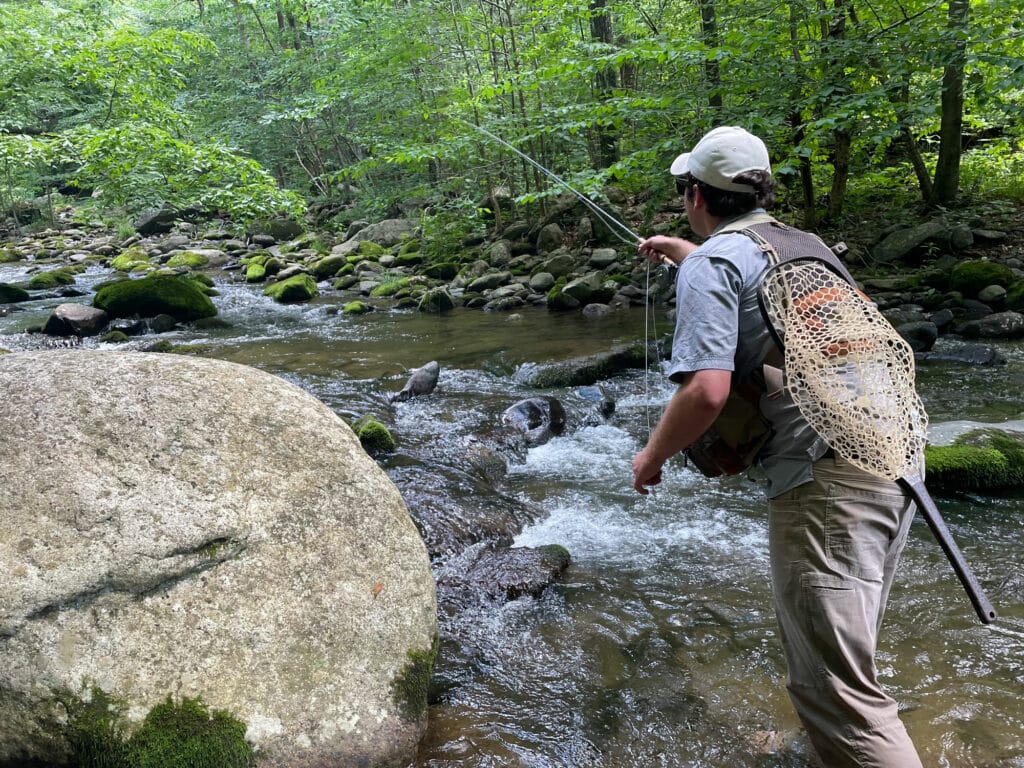
Hoover’s Rapidan Camp was the Camp David of the turbulent 1930s, and some of the buildings, trails, and bridges where the Rapidan forms at the confluence of two headwater streams are still maintained by the National Park Service.
Downstream of the presidential retreat, the Rapidan runs through the national park as well as DWR’s Rapidan Wildlife Management Area, offering plentiful access to gorgeous stream mileage dotted with the pocket water and large plunge pools brookies love.
“Anglers can utilize miles of dirt road that parallels the Rapidan River through DWR’s Rapidan Wildlife Management Area,” McCrickard said. “Accessing the river through Shenandoah National Park also provides a wealth of opportunity for the exploring angler.”
With its fame and proximity to the nation’s capital, the Rapidan does see some fishing pressure. However, the fish remain in the creek under catch-and-release, single-point-hook, artificial-only regulations, and anglers who hike will find more lightly pressured stretches of river. McCrickard said most of the fish caught will be in the 7- to 9-inch range, with some 10- to 13-inch brutes showing up on occasion.
Spring is generally the best time to fish the Rapidan. With higher flows, numerous overlapping hatches, and a brook trout’s proclivity for feeding with wild abandon, bright and bushy attractor dry flies work well. In late summer, terrestrial patterns like ants and hoppers become important.
Any discussion of flies and the Rapidan must include mention of Harry Murray’s Mr. Rapidan series. Murray opened Murray’s Fly Shop in Edinburg, Va., back in 1962, and his Mr. Rapidan flies are a dozen or so patterns designed specifically for the streams of Shenandoah National Park.
As one of the largest brookie streams flowing from the east slope of the Shenandoah’s Blue Ridge, the Rapidan offers plenty of casting room and it’s loaded with fish.
More Info: Murray’s Fly Shop,
murraysflyshop.com
East Fork Pigeon River
Shining Rock Wilderness, North Carolina
I’m not sure if I’ve ever seen a prettier place than the top end of the East Fork of the Pigeon River in North Carolina’s Shining Rock Wilderness Area. This creek begins as a small rill known as Yellowstone Prong and tumbles from more than 5,500 feet of elevation off Black Balsam Knob into a winding river valley.
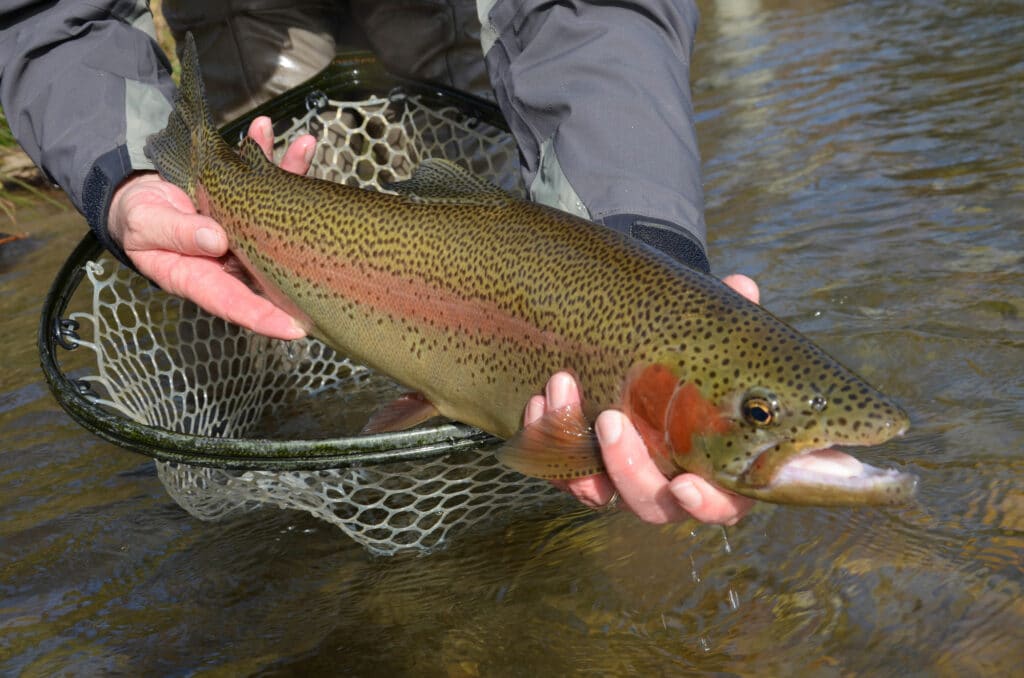
There are dozens of miles of ultra-clear brook trout water to explore up the East Fork and its tributaries. The East Fork proper is large and open by high-elevation native brook trout standards. It is the result of a steep streambed scoured of silt and vegetation by flooding with each significant rainfall. In normal flows, this natural process leaves a medium-sized creek that bounces around in a river-sized bed of cobblestone. The water is so clear that it’s possible to see individual pieces of pea gravel in 10-foot-deep holes. Stare deep enough, and you can see the fish. They will also see you.
In relatively sterile waters with scant insect life, brookies—known locally as specks—must feed opportunistically and are not picky. In late spring, summer, or early fall, one brightly colored dry fly is as good as any other for fish that rarely grow longer than 10 inches. It’s a good time to make use of the outlandish patterns rusting for lack of use in a corner of your fly box.
When the dry fly bite is on, it’s on, and there’s nothing more fun than moving from pocket to pocket drawing splashy rises from pretty little specks. But it’s not always so easy. Resorting to small nymphs or very small streamers might save a slow day.
The creek changes character in its roughly five-mile run through the wilderness area. Stream-born rainbows and browns begin to dominate the fishery below falls upstream of the U.S. 276 bridge. From spring through early fall, these fish can be caught with your standard western North Carolina fly box. March browns, sulphurs, Light Cahills, and yellow stoneflies are important. Stimulators, Adams, Yellow Humpies, and Thunderheads are good attractors, and it’s a good idea to drop a small Pheasant Tail, Copper John or Hare’s Ear beneath your dry fly. Most fish you’ll catch in this stretch will be less than 10 inches and gorgeous. There are, however, some larger fish in the deeper holes. Slowing down to dredge out likely lies with deep nymph rigs or twitching heavy streamers might produce a brown trout in the 16- to 18-inch range.
This stretch of the East Fork of the Pigeon River is in the middle of nowhere between Brevard and Waynesville, N.C. It is paralleled by the scenic Blue Ridge Parkway, which runs the ridge high above the river valley and closes in winter. There is parking at a popular hiking destination called Graveyard Fields. A second official access point is adjacent to the U.S. 276 bridge. The Big East Fork Trail runs riverside and getting to the best water requires a hike.
It’s a great place to spend a weekend camping and fishing, despite a prohibition on campfires and a requirement for bear-proof food containers.
More Info: Davidson River Outfitters,
davidsonflyfishing.com
Jacks River
Cohutta Wilderness Area, Georgia
With about 15 miles of river between vehicular access points, the trout in north Georgia’s Jacks River are about as wild as trout get in this part of the world. The Jacks is a medium-sized stream that runs a valley between 3,000 to 4,000-foot peaks of the Cohutta Mountains. With strenuous hikes required to reach the best trout water, it is a fantastic place to pack-in and fish through a long weekend.
The river is almost fully contained within the Cohutta Wilderness Area and Cohutta Wildlife Management Area. It flows north into Tennessee’s Big Frog Wilderness in a block of undeveloped forest that totals about 95,000 acres. Getting to the Jacks requires a long ride on rutted out and poorly marked gravel roads, followed by a hike of at least a couple miles to reach fishable water.
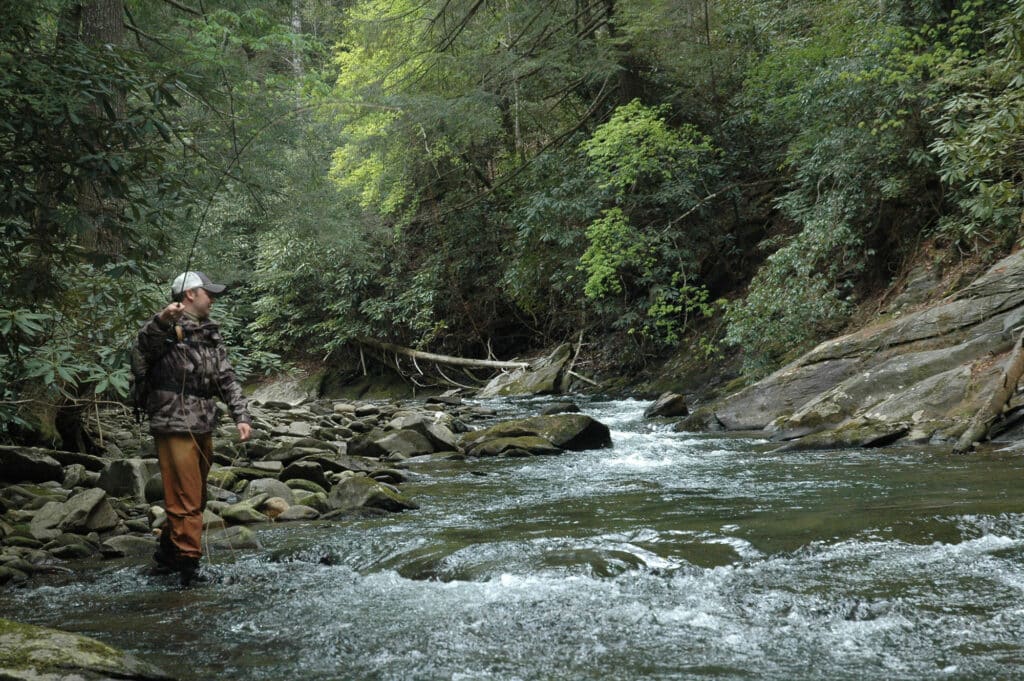
For this reason, there aren’t too many anglers who pursue the wild rainbows and browns in Jacks River. To the east, nearby Blue Ridge, Ga., is an epicenter for trout fishing in the state, and there’s a lot of easily accessible trout water that draws the fishing pressure. In all the times I’ve dropped into the river, I’ve seen less than a handful of anglers who were not a part of our group. You’ll run into plenty of hikers and backpackers making the more than 40 river crossings on the Jacks River Trail, but the walk is more than most anglers are willing to undertake.
Now, one might think unpressured fish would be easy pickings, but the Jacks can be fickle. On the smaller upper end of the river, clear water and low flows call for stealthy wading. The fish aren’t particularly selective when they’re feeding, and they aren’t leader shy, but you might as well move on if you spook a hole. There are plenty of holes to hit. The river’s meandering course through a steep, boulder-strewn valley, along with huge logjams created by a 2016 wildfire, makes for some very interesting fishing water.
Insect life on the river is typical for small streams on the southern end of the Southern Appalachians, meaning there’s a spattering of different mayflies, stones, and caddisflies with few well-defined hatches. A dry-dropper rig with attractors like a Stimulator or an Adams fished above a Pheasant Tail or a Hare’s Ear nymph is usually productive, and it’s worth tying on a bright sulphur, a Yellow Sally, or an Elk Hair Caddis to match what you might see on the water.
Most of the fish you’ll catch on the Jacks measure less than 12 inches, although the occasional 14- or 16-incher does show up and there are some 20-plus-inch browns lurking in the deeper holes. Nymphing methodically is the best way to hook up with the river’s larger fish, and anchoring a multi-nymph rig with a heavy giant stonefly imitation like a Pat’s Rubber Legs or a Kauffman’s Stone is always a good idea.
On the north end, access is via the Beech Bottom trailhead in Tennessee’s Big Frog Wilderness. The river flows south to north, and access to the upper end of the river is via the Dally Gap parking area on Georgia’s Cohutta Wilderness.
More Info: Cohutta Fishing Company,
cohuttafishingco.com
